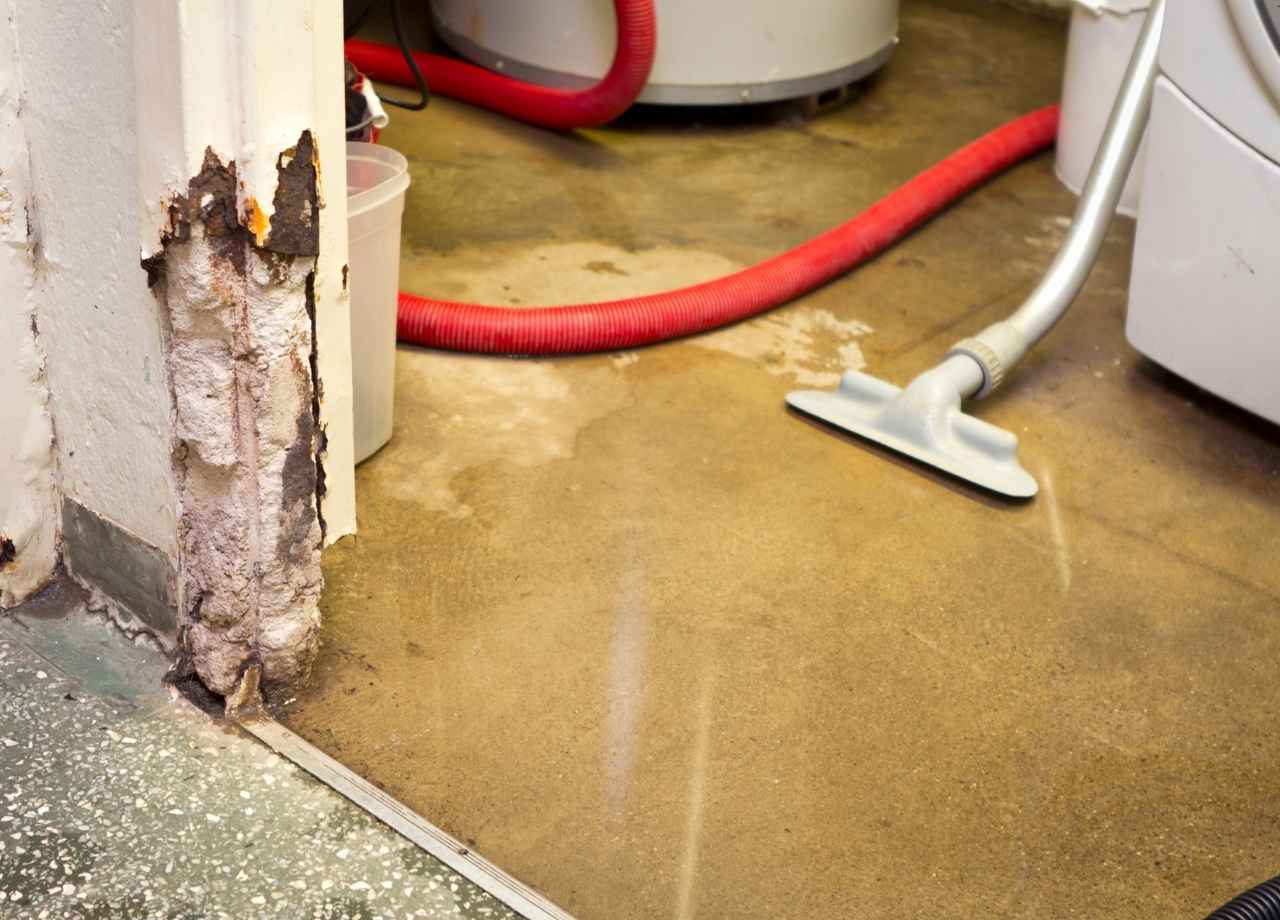Water damage in a laundry room can spiral quickly from a minor inconvenience to a serious structural or mold issue. It often begins with a small leak or malfunctioning appliance and escalates before anyone notices. When that happens, homeowners need to know the difference between what they can handle on their own and what calls for professional help. At First Coast Contracting, we’ve seen just how fast laundry room issues can impact flooring, drywall, and adjacent rooms if left unchecked.
Table of Contents
Why Laundry Rooms Are High-Risk Areas for Water Damage
Laundry rooms combine high water usage with pressurized plumbing, electricity, and often minimal ventilation. Between washing machines, utility sinks, supply lines, and drain hoses, there’s a constant opportunity for leaks or overflows. Unlike bathrooms or kitchens, laundry rooms are typically tucked away in less-trafficked areas of the home, which means leaks can go unnoticed for days or weeks. Moisture builds up quietly behind appliances or under flooring until the damage is substantial.

The risk is even higher in older homes where connections may have aged or weren’t built to modern standards. Rubber supply hoses, improperly installed or outdated drain systems, and sloped flooring can contribute to recurring issues. And with some homeowners doing multiple loads of laundry daily, the stress on plumbing is continuous.
Common Causes of Laundry Room Water Damage
Several common issues tend to trigger water damage in laundry spaces:
Burst or Leaking Washer Hoses: Rubber hoses degrade over time. If they crack or burst, they can release dozens of gallons of water in minutes.
Clogged or Malfunctioning Drains: If the washing machine’s drain backs up, water can overflow rapidly, especially during the spin cycle.
Improperly Installed Appliances: A washer that isn’t level or a drain pan that’s poorly placed can lead to consistent leaks.
Blocked Vents and Condensation: Dryers that aren’t venting properly can build up excess moisture in the room, leading to damp drywall or mold behind machines.
Slow Leaks from Utility Sinks: Whether it’s a loose connection or a cracked pipe, slow leaks often go unnoticed until visible damage appears.
Signs of Water Damage You Shouldn’t Ignore
Some early signs of water damage might not seem serious at first but often point to larger problems. Look for the following indicators:
- Musty odors even after cleaning
- Warped baseboards or lifting vinyl tile
- Discoloration on walls or ceilings near or behind appliances
- Cracks in drywall around plumbing lines
- Soft or spongy spots in the flooring
- Mold growth along the seams of walls or floors
The presence of any of these signs usually means the issue has been developing for some time. Surface cleaning won’t solve the problem—it requires removing moisture from behind materials and repairing what’s been compromised.
What Homeowners Can Handle (and When They Shouldn’t)
Quick action is essential with any water issue, but not all situations require professional remediation. If a small leak is identified early—like a loose washing machine connection—and there’s no evidence of water reaching flooring or walls, a homeowner can often correct the problem. Turning off the water supply, tightening fittings, and using fans or dehumidifiers to dry the area may be sufficient.
However, DIY solutions are only safe when:
- The leak was caught immediately
- No standing water remains
- There’s no sign of mold or drywall damage
- The source is known and fully contained
If water has soaked into walls, run underneath the floor, or been sitting for more than a few hours, the risk of mold, wood rot, and electrical hazards increases. At that point, it’s time to call a professional.
When Professional Help Is the Right Call
Several situations in a laundry room demand professional water damage restoration and repair:
Extensive Moisture Under Floors or Behind Walls: If moisture meters or infrared cameras reveal water behind surfaces, it’s not enough to air out the space. That moisture needs to be extracted, and affected materials often need to be removed and replaced.
Mold Growth: Mold spreads quickly in hidden areas and poses serious health risks. Professionals can identify hidden colonies, safely remove them, and treat the space to prevent recurrence.
Structural Concerns: Prolonged exposure to water can damage subflooring, framing, or wall cavities. If there’s buckling, sagging, or visible deterioration, it requires experienced reconstruction.
Recurring Leaks: If the laundry room has had multiple water issues, there may be a plumbing design flaw or issue with the appliance installation that needs to be reworked.
Sewage Backup or Contaminated Water: If a backup involves gray water or worse, black water, the cleanup needs to meet sanitation protocols. Homeowners should never attempt this type of cleanup themselves.
Preventing Future Laundry Room Water Damage
Once the immediate issue is resolved, a few smart upgrades and maintenance habits can prevent another incident. Replace rubber hoses with braided stainless steel ones, which are more durable. Use a washing machine pan to contain any small leaks. Make sure the drain system is up to code, and consider installing a water sensor alarm. Annual inspections of all connections and fittings can also catch problems before they escalate.

It’s also a good idea to tilt the floor slightly toward a drain if a remodel is underway. That helps reduce the risk of water pooling. Adequate ventilation—through a fan or window—helps control moisture buildup from dryers or utility sinks.
Bottom Line: Don’t Wait Too Long
Laundry room water damage often escalates quietly. By the time visible signs appear, underlying damage can already be significant. While small leaks can sometimes be addressed with quick DIY steps, any situation involving soaked walls, flooring, or signs of mold is better handled by experienced professionals. It’s the difference between a quick repair and a full-scale restoration.


